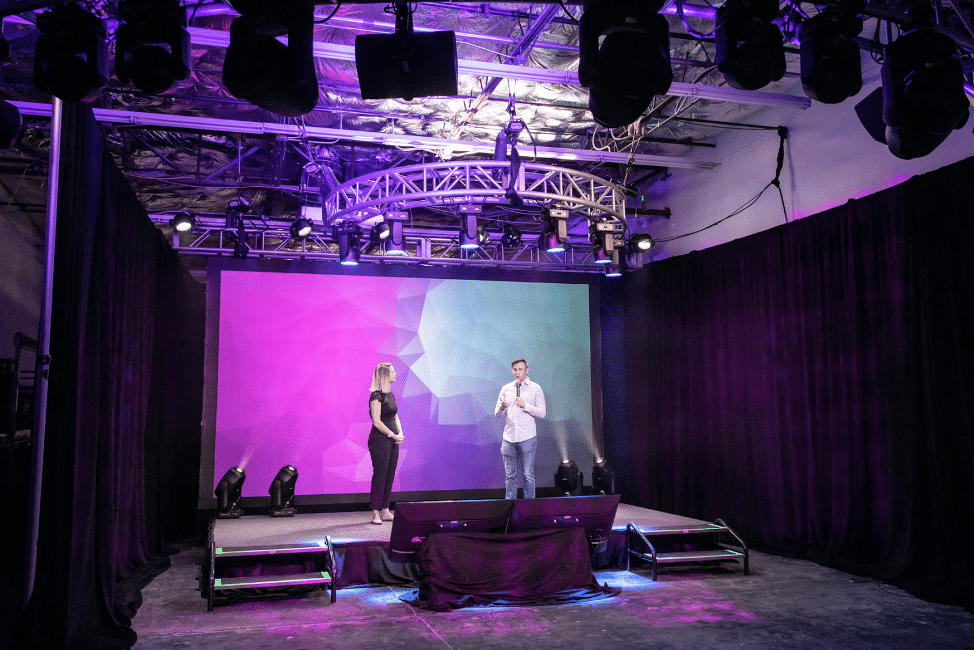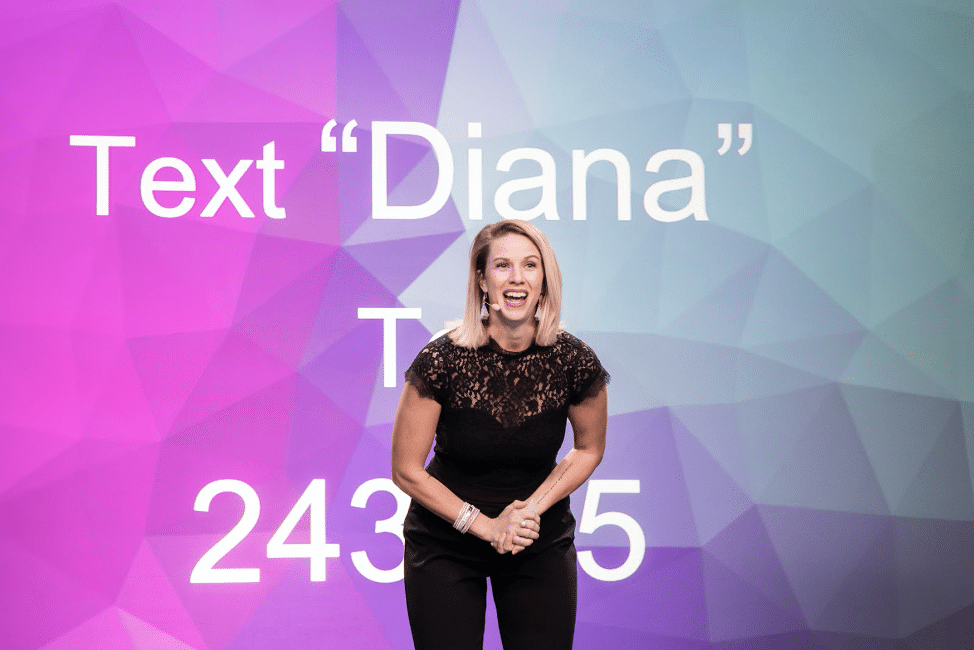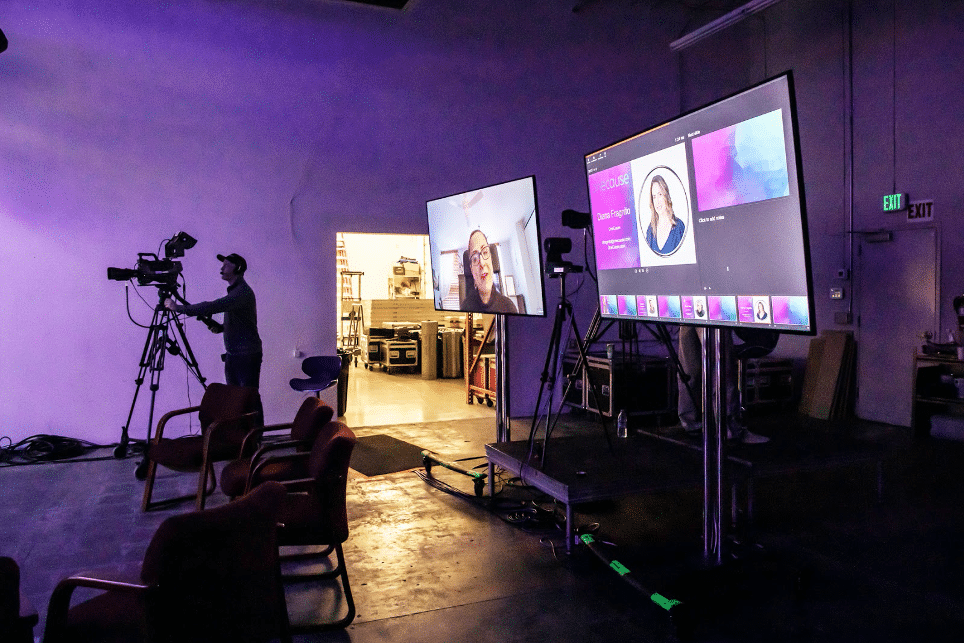5 Signs You’re Ready for a Virtual Event
Everyone seems to be asking these same questions… “Are we ready for a virtual event? What does it take to actually have a successful virtual event? This is so new to us, are we even ready?”
If you’re feeling overwhelmed about hosting a virtual event, then keep on reading! I want to show you the 5 most important things to consider when hosting a virtual event, and I’m going to start with the most important piece that most organizations haven’t even been doing with their live events! These include:
As the world continues to navigate what our new normal looks like, I believe that virtual events will become part of our new standards of what fundraising events will and can look like – not only for tomorrow, but for the years ahead.
There are so many pros to hosting a virtual event (check out this blog post on all the pros and cons of hosting a virtual event) that nonprofits will most likely be considering them as their official fundraising event.
That means with proper planning, your virtual event isn’t something you just have to have because your existing live event got canceled, but something you add into your event toolbox.
Now that we have time on our side to consider what a virtual event looks like months from now, let’s get things started.

Email Marketing
This is not a newsletter.
This is the number 1 thing you should be doing in order to host a successful virtual event. In most cases, organizations are not even doing this properly with their live event.
With that being said, regardless of if you host a virtual event and/or a live event, this step will benefit you in the long run.
Check out this study from Next After on the value of email.
So what does email marketing look like? Email marketing, in short, is the strategic process of consistently collecting email addresses on your website, events, social media, or various opt-ins and providing value to the. This builds a virtual relationship with your following or ‘tribe.’
The reason that email marketing is so important is that it gives you the opportunity to consistently be attracting new potential donors and supporters that will either volunteer, attend an event, host an event, participate in your virtual event, or give their time or resources.
Events have been a great place to bring people together and they still will be. Many times at these events, people show up and don’t know anything about your organization or what you do. They attend and if you don’t collect their email address, then you have no way to continue to build that relationship in a consistent way.
Email marketing helps you continue to educate and inspire new and existing donors and allows you to build a long term relationship with these folks through the stories about your organization year round—not just at your annual event.
All this to say, when it comes time to hosting your event, virtual or live, your audience is well aware of your mission, who you are, and how you do business. They are primed and ready to participate.
In the virtual event space, email marketing will allow you the opportunity to communicate with people outside of your local area and begin to expand your reach of supporters who will want to connect with you during a virtual event.

When it comes to email marketing software, choose wisely, there are lots of options available, but you’ll want to pay attention to some important capabilities:
- Landing Pages. This will allow you to create specific landing pages and/or registration pages easily for programs you have or registrations for events. Landing pages are a great alternative to creating website pages and are much easier to manage and maintain.
- Forms. Forms are where people will enter their name and email address. This information is collected on your website, or from landing pages, and is stored in your software. They allow you to track who is opting into what and how you want to communicate with them.
- Tags. Tags allow you to segment your audience. For example, some people might be interested in 1 service and another group of people interested in another. You want the ability to communicate with what people are interested in and not just send blanket emails all the time to your audience (i.e. a newsletter). Or if you are having an event (either live or virtual), you want to communicate specific details to specific people. Tags allow you this capability.
- Automation and Sequences. This might be the most important feature to consider with your software selection. This allows you to automatically send emails based on how people interact with you. The great part about this is that once you have it set up it becomes automatic and your event attendees will be delivered specific information based on when they sign up or when you’re ready to send specific information to them. This capability allows you to focus on other details of your event instead of worrying if people are getting the right information and writing that out the day before your event starts.
- Have no idea what to sign up for? My absolute favorite email software is ConvertKit… it does everything I mentioned above and it’s free up to 500 subscribers. Totally worth the money after that.

Budget and Sponsorship
Event Economics
Just with any successful live event, you have to make sure the simple economics of events are in place. This begins with setting a budget and, at bare minimum, covering that budget with your event sponsors.
Don’t assume that because you are doing a virtual event that vendors are going to donate their services and you won’t have to pay anything.
Let’s get savvy with our events and start planning out how to strategically afford what we need. In order to have a virtual event, we need to make sure that we know what costs are associated with it.
Now, while I love the cost advantage to host a virtual event vs. a live event (i.e. you don’t have to pay venue or food and beverage costs), there will be some costs that you might not be aware of. Below is a list if the tools you might need to consider for your virtual event.
- Audio/Visual – This could be the use of a studio where everything is set and ready to go for you, OR having a studio set up at your location. Going to a studio will be more cost-effective vs. having it set up in your space for a one time use.
- Your AV team will be your biggest asset in hosting a virtual event. They can make all the magic happen—like getting you connected to livestreaming, managing how to switch back and forth between the live stage and a virtual speaker, displaying your fundraising scoreboard… they take care of all those technical details so you can worry about your content and raising more money. *I don’t recommend trying this at home.
- Thinking about having a studio for multiple events or content creation? Consider having a studio space set up in your office or warehouse for continuous use.
- Fundraising software – This is a must when raising money virtually. This needs to be streamlined and easy for the end-user. I love OneCause because they make it so easy to get started on mobile devices from afar. Send a quick text message and your attendees are ready to go!
- I’ll talk more about this in section 6, but make sure your silent auction, live auction, and paddle raise are hosted all in one place. This makes it easy for your guests.
- Video editor – If you’re going to record all or part of your event, make sure to budget for a video editor to cut your video into digestible, watchable pieces and add an intro and outro for your videos. You can also create a recap video to attract new sponsors and use it as marketing for next year’s event!
- You might also need great video content to talk about your organization and showcase what you do. These are really valuable pieces when it comes to hosting a virtual event.
- Photographer – It’s really important to capture your virtual event on camera. Visuals really help people see what you’re doing. This is also a great way to create marketing for future events as well as attract sponsors.
- Graphic Designer – If your in-house graphics aren’t up to date, make sure your design looks professional and current… the virtual space is not a place for old graphics and designs!

Selling virtual event sponsorships is the number one place to focus on bringing revenue to your event.
The first step to define what you need from sponsorships is to define your event budget. Need step-by-step guidance in selling high value sponsorship for your next virtual event? Check out The Profitable Nonprofit Event – A step by step program designed to fast track your impact and fundraising with event sponsors!
A must have for LIVE and VIRTUAL events!

Production Planning
Think TV.
If you spend a lot of time planning out your live event program, this might not be a huge deal for you. But we’ve all been to that boring event where the program runs on and on for hours and all we want to do is leave, but we’d be embarrassed to. In the virtual space there is no embarrassment to leave, because no one is watching!
Your production needs to be high quality and engaging, just like watching a live show on TV. You’ll need to incorporate various forms of personality, entertainment, transitions to and from the live stage, and use of videos.
One of my favorite live TV shows is America’s Got Talent (AGT). Here’s how your event can use concepts from AGT:
- Introduce the hosts and judges at the beginning of the show.
- Tell a story about the contestants to make us feel happy, sad, or excited for someone.
- Produce commercials for sponsors (wink, wink) and sponsored segments during the live show.
- Entertain!
- Allow interaction with voting (for our purposes, fundraising).

These five concepts will help you build out your own virtual event experience. Want to watch an example of a live virtual event? Get instant access here.
The final piece to hosting a great virtual event, is to make sure your person/people on stage are highly engaging and entertaining. This should be your host or emcee, and could possibly be your auctioneer.
Keep in mind that performing for a virtual audience is very different than performing for a live audience, and the people you’ve used in the past may not be a great fit for the virtual space.
As you build out your production, keep these components in mind as they will help you create an engaging event.
I believe with this format you can accomplish a 45-60 minute program that will keep attendees energy up and engaged.

Fundraising
Giving must be easy. Plain and simple.
Fundraising is going to be your main priority when hosting this event. So, it’s important that you make this portion engaging and interactive.
If you complicate the giving process people will not participate.
Be sure to have an auctioneer to bring energy and emotion to your fundraising. I promise this is a way better option than having one of your board members or volunteers do this. Not only do they bring a high level of energy, they know how to capture people’s attention and ask for money.

I get asked a lot of questions about what kinds of fundraising components they should incorporate into their virtual fundraising event. My easy answer is: whatever you have access to.
After watching virtual events as they have evolved over the last couple of months, I try to think of the experience for people watching at home. I’m not convinced that silent and live auctions are a must have in your virtual event environment. They’ve come across more like watching QVC than AGT. So, if you don’t feel like you have all the pieces in place to have a great silent and live auction, don’t worry. Focus on delivering content, telling your story, and inspiring your audience with the work you do then do a virtual paddle raise.
I think that the biggest question you must ask yourself is: Who are you trying to attract? Is your audience more local or are they from afar?
This determines what kind of silent/live auction you might have. Someone who lives in another state might not be as excited to bid on your auction items if they are local baskets. The logistics of delivering those items will be a huge headache! However, it won’t affect your local audience as much if they can easily be delivered or picked up.
However, if your audience is a combination of both, stick to travel packages from places like Winspire or Auction Packages. These are easy packages for people to bid on from their mobile device, and they are easy for you, as the organization, to deliver the product. Travel will always be in style.
My main advice, if you’re not keen on hosting a virtual silent or live auction, focus your program on entertaining, engaging and inspiring people. Really show off what you do and your impact on the people you serve and initiate a meaningful paddle raise. Ultimately, people want to give and support more than they want the stuff.
Thanks for reading, and cheers to successful virtual event fundraising! As always, feel free to reach out with any questions, comments, and success stories you may have.
Not Done? Keep Learning with OneCause!
For more information on virtual fundraising, be sure to check out these additional resources:
Guest Author: Danielle Snelson, CEO of The Profitable Nonprofit Event
 Danielle Snelson has been planning corporate and nonprofit events since 2007. Her clients are raising 20% more each year and are sold out months in advance. The Profitable Nonprofit Event is teaching organizations how to be successful and drive event fundraising strategies to do more within their organizations, allowing them to create more impact.
Danielle Snelson has been planning corporate and nonprofit events since 2007. Her clients are raising 20% more each year and are sold out months in advance. The Profitable Nonprofit Event is teaching organizations how to be successful and drive event fundraising strategies to do more within their organizations, allowing them to create more impact.
Social Media
Don’t overthink it.
When it comes to social media, it’s really important to have a presence, but don’t overthink this. The great thing about focusing on email marketing is it will provide you with the content you need for social media. Yeah, you’re killing two birds with one stone, right?
Social media doesn’t need to have additional content created, it’s more of a space to reiterate or emphasize what you communicate with email. It is important to keep your page fresh and current.
This is also a good place to direct people to go and opt-in to your email list!
So why do I place more importance on email over social media? Well, the short version is that you own your email list… you don’t own your social media outlet. Email allows you to communicate how you want and when you want without being affected by social media algorithms and decisions made by those companies.
Social media is a great tool, but not a place to put all your energy into. Email will always trump social media in my opinion, although I do think most people do the opposite.